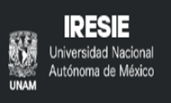OCCUPATIONAL DIVISION AND CONTEMPORARY CHANGES IN INDIA
CASE STUDY OF A TRADITIONAL COMMUNITY AND THEIR ALTERNATIVE OCCUPATIONAL-BASED SOCIAL MOVEMENT
DOI :
https://doi.org/10.35699/2238-037X.2022.19374Mots-clés :
Traditional occupation, Contemporary changes, Community nomenclature Identity, Social MovementRésumé
Occupational divisions in any country are understood largely as change in the activities of the membersin a given society and the way to earn their livelihood. Mostly, the change is observed in terms of changes in the distribution activities in the socio-economic structure of the society. India is a traditional caste-based society and so it is pertinent to describe occupational activities in terms of socio-cultural rather than the socio-economic structure. The socio-cultural implications of these occupational changes of the communities’ opted alternative occupational options and understanding their development, requires interrelations of various aspects with holistic approach. The researchers felt that there is inadequacy of empirical studies relating to socio-cultural, economic and political attributes of different occupational groups. The point of departure of this paper is the caste affirmation and its ramifications on traditional communities by claiming their traditional occupations for new social identity. This affirmation in turn is expected to lead to a shift in the socio-political relationships of the community with the other dominant communities in social hierarchy. In India, occupational changes are taking place more widely than statistical changes and emerging with alternative social movement. This paper also critically analyses the existing caste theories, lacuna in the existing nomenclature, and gives a glimpse of Constitutional Privileges and their reflection on contemporary Government Orders (GOs) with special reference to a community (Scheduled Caste) in Tamil Nadu (State in South India). The paper empirically validates the emerging alternative collective social movement of a community, their social status through traditional occupation, knowledge system and their resistance to inclusion in the existing nomenclature
Références
BUTOOL, Falak. Scheduled Caste Occupational Mobility: A Study in Askaranpur Magrohani Village of Sirathu Block in Kaushambi District. Transactions, v.40, n.1, p.83, 2018.
DARDINSKI, Madelyn. India in transition: a politico-literary view. Mahfil, v.8, n.2/3, p. 215-222, 1972.
DAVIS, Kingsley., MOORE, Wilbert. Some principles of stratification. American sociological review, v. 10, n.2, p.242-249.1945.
DESAI, I. P. Understanding Occupational Change in India. Economic and Political Weekly, p. 1094-1098. 1971. Retrieved from 14.139.186.162 on Fri, 11 Oct 2019 06:24:18 UTC.All use subject to https://about.jstor.org/terms
DESHPANDE, Manali S. and KERBO. History of the Indian caste system and its impact on India today. 2010.
GALANTER, Marc. Competing Equalities: Law and the Back Ward Classes in India. 1984.
GENERAL, Register. Census Commissioner. Census of India, 2003.
GUPTA, Dipankar. Positive discrimination and the question of fraternity: Contrasting Ambedkar and Mandal on reservations. Economic and Political Weekly, p. 1971-1978.1997.
GUPTA, Dipanka. Whither the Indian village: culture and agriculture in 'rural' India. Economic and Political Weekly, p.751-758. 2005.
GUPTA, Giri.Raj. Reference Models and Social Mobility: A Case for Rural India. International Review of Modern Sociology. Vol. 2, n.1, p. 83-90, 1972.
HORAN, Patrick M. "The structure of occupational mobility: Conceptualization and analysis." Social Forces. v. 53, n.1, p. 33-45, 1974.
JENKINS, Richard. Social Identity. Routledge, London. 2004.
KUMAR, Sanjay. Anthony Health and Oliver Heath. Determinants of Social Mobility in India. Economic and Political Weekly, v. 37, n.30, p.2983-87, 2002.
Kumar, Sanjay. Changing Patterns of Social Mobility. Economic and Political Weekly, v. 37, n.40, p.4091-4096, 2002a.
KWAT’S, Natasha. Occupational Structure in India: An Overview. Economic Discussion. Retrieved 31 December 2019, from http://www.economicsdiscussion.net/india/occupational-structure-in-india-an-overview/19135
ILO (2020). ILOSTAT database. https://ilostat.ilo.org/data/. Accessed 21 July 2020.
MEHTA, Pooja. Occupational Pattern in India. Economic Discussion. Retrieved 2 January 2020, from http://www.economicsdiscussion.net/articles/occupational-pattern-in-india/2157
MELUCCI, Alberto. Nomads of the Present: Social Movements and Individual Needs in Contemporary Society. Hutchinson Radius, London.1989.
NATIONAL SAMPLE SURVEY OFFICE, Government of India. 68th Round, July 2011 – June 2012.
NATIONAL SAMPLE SURVEY. Government of India. 1999-2000.
PARSONS, Talcott. An analytical approach to the theory of social stratification. American Journal of Sociology, v. 45, n.6, p.841-862, 1940.
PATNAIK, Prabhat. Caste, community and belonging: the Indian case. Social Scientist, v. 45, n.1/2, p.73-79, 2017.
PRASAD, Vishnu. and MAHESHWAR. Pratap. Variations in the Occupational Structure and Gender Segregation in India and the States: Analysis Based on Census of India 2001 and 2011.
International Journal of Economics and Managerial Science, v. 6, n.4, p. 1-9, 2017. [Google Scholar].
RAWAT, Ramnarayanan. S. Occupation, dignity, and space: The rise of Dalit studies. History Compass, v.11, n.2, p.1059-1067, 2013.
REGISTRAR. General. Census of India (2011): provisional population Totals India data sheet. Office of the Registrar General Census Commissioner, India. Indian Census Bureau. 2011.
SATYANARAYANA, K. Politics of (Self) - Representation: Case of a De- Brahminised’ Brahmin. Economic and Politcal Weekly, v. 26, n.47, p.2716-2716, 1991.
SHAH, Ghanshyam, Caste and Democratic Politics in India. Permanent Black, Delhi. 2002.
SHAH’S. A.M., Caste in 21st Century: From System to Elements, Economic and Political Weekly. v. 42, n.44, p.109-16, 2007.
SHETH. D.L., Caste and Class: Social Reality and Political Representation in Pai Panandikar and Ashis Nandy, Contemporary India. Tate McGraw Hill. p. 331-56. 1999.
STEKELENBURG, Jacquelien. Collective identity. The Wiley‐Blackwell encyclopedia of social and political movements. Research Gate. 2013.
SUMATHI. Srinivasalu., Is there a creamy layer among OBC: An Anthropological – Legal Study of Other Backward Classes.TMS. Publication. 2001.
TAYLOR, Verta. and WHITTIER, Nancy .E. Collective identity in social movement communities: Lesbian feminist mobilization. In: Morris, A., and Mueller, C. (eds), Frontiers of Social Movement Theory. Yale University Press, New Haven, CT. 1992.
THE PEOPLE OF INDIA PROJECT. Anthropological Survey of India. 1985-1992.
WORLD DEVELOPMENT REPORT. World Economic Recession and Prospects for Recovery Management in Development Public Disclosure Authorized World Development Indicators. Washington, D.C. 20433 U.S.A.: Oxford University Press.1983.
Téléchargements
Publiée
Numéro
Rubrique
Licence
(c) Copyright Trabalho & Educação 2022

Ce travail est disponible sous la licence Creative Commons Attribution 4.0 International .
Os autores têm autorização para assumir contratos adicionais separadamente, para distribuição não-exclusiva da versão do trabalho publicada nesta revista (ex.: publicar em repositório institucional ou como capítulo de livro), com reconhecimento de autoria e publicação inicial nesta revista.












